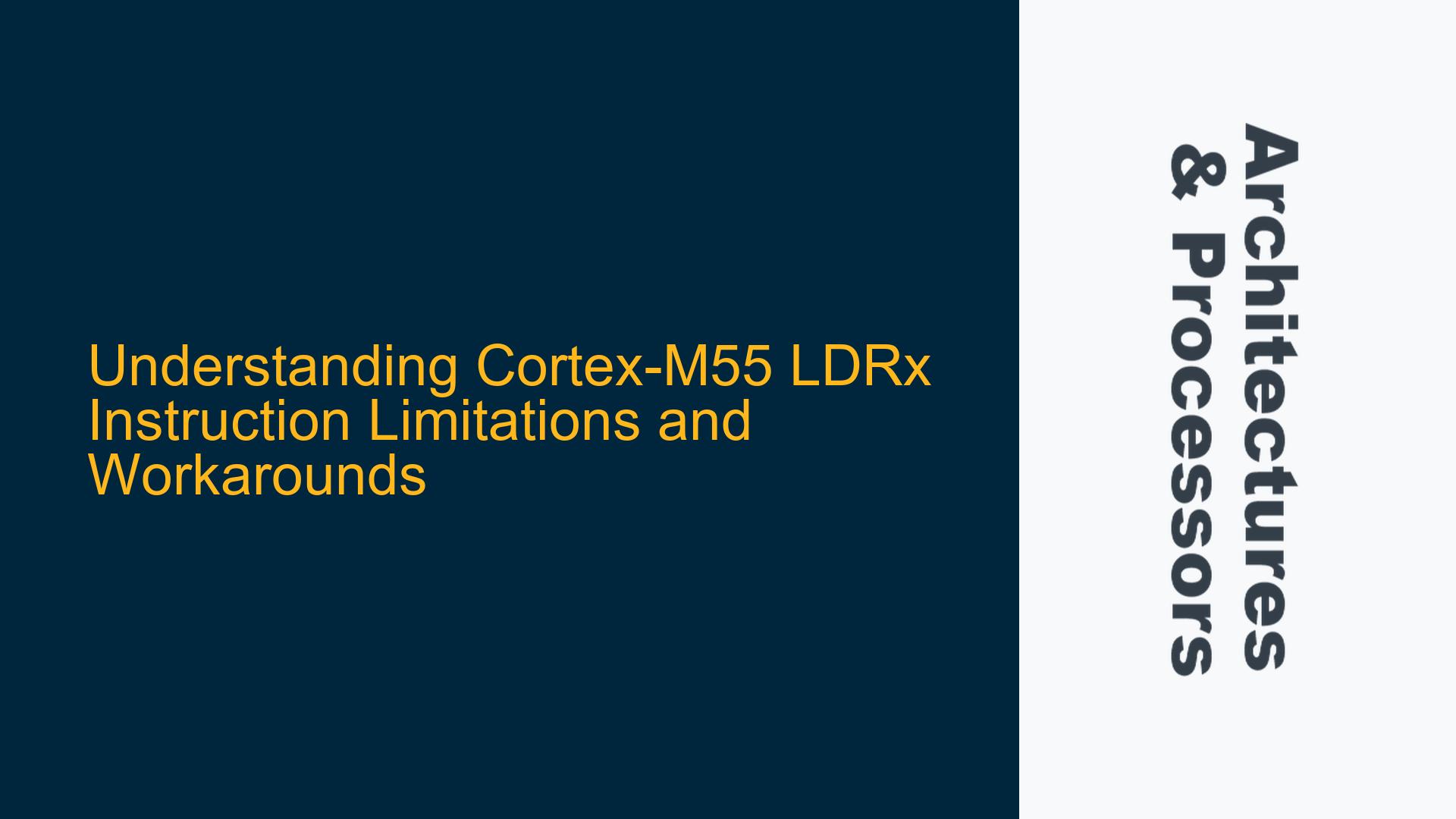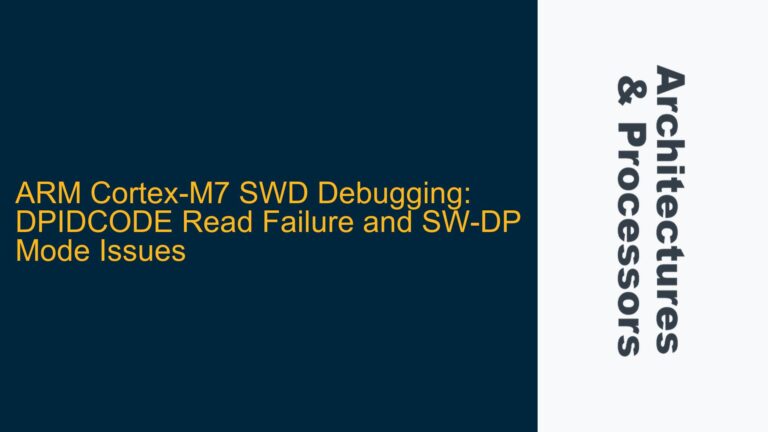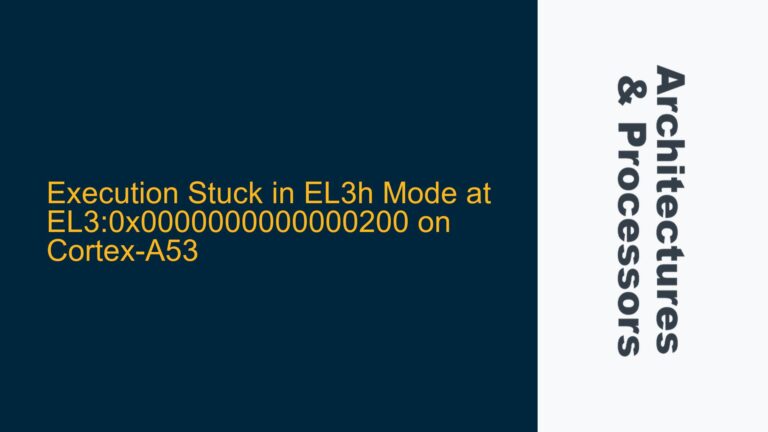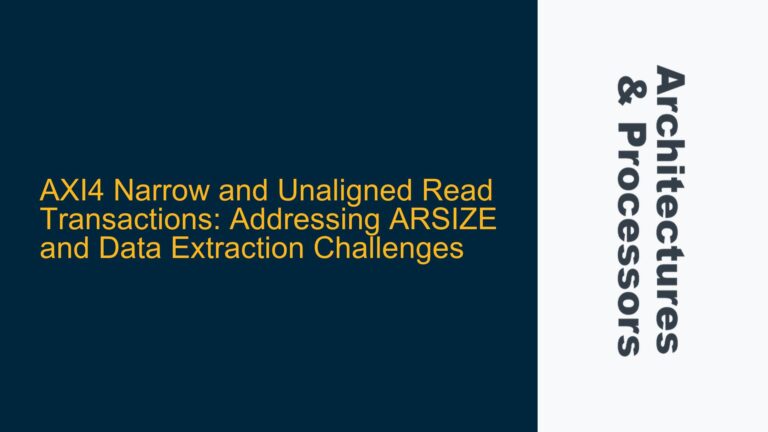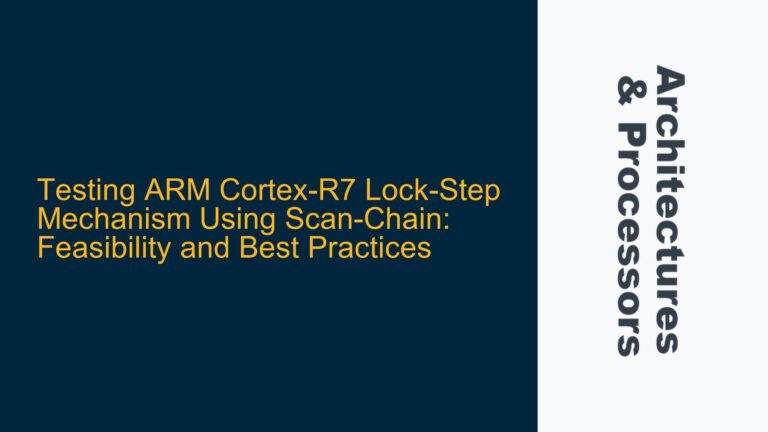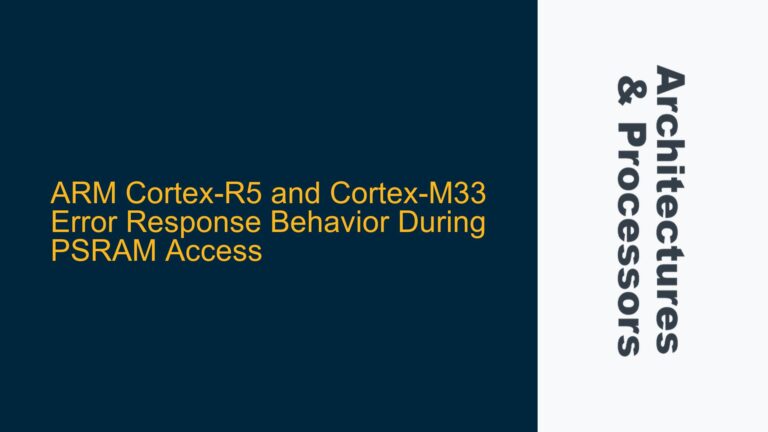Cortex-M55 LDRx Instruction Set Limitations
The Cortex-M55, as part of the ARMv8-M architecture, introduces several enhancements over its predecessors, particularly in the areas of security and performance. However, one notable limitation is the absence of post-indexed and pre-indexed load instructions (LDR{type}{cond} Rt, [Rn], ±Rm {, shift} ; or LDR{type}{cond} Rt, [Rn, ±Rm {, shift}]!). These instructions, which are commonly found in other ARM architectures, allow for efficient memory access patterns by automatically updating the base register (Rn) after or before the memory access. This feature is particularly useful in scenarios such as array traversal, stack operations, and other memory-intensive tasks.
The Cortex-M55 instruction set reference explicitly states that these forms of load and store instructions are not supported. This limitation can be traced back to the design philosophy of the Cortex-M series, which prioritizes simplicity, determinism, and security over the more complex and potentially less predictable features found in higher-end ARM cores. The absence of these instructions means that developers must employ alternative strategies to achieve similar functionality, which can impact both code size and performance.
Implications of Missing Post/Pre-Indexed LDRx Instructions
The lack of post-indexed and pre-indexed load instructions in the Cortex-M55 has several implications for software development. First, it affects the efficiency of memory access patterns. In architectures that support these instructions, a single instruction can both load a value from memory and update the base register, reducing the number of instructions required for common operations. Without these instructions, developers must use separate instructions to load the value and update the base register, which increases code size and can reduce performance.
Second, the absence of these instructions can complicate the implementation of certain algorithms. For example, in a typical array traversal, the post-indexed load instruction allows the base register to be automatically incremented after each load, simplifying the loop structure. Without this feature, developers must manually increment the base register within the loop, which can lead to more complex and error-prone code.
Third, the lack of these instructions can impact the portability of code between different ARM architectures. Code that relies on post-indexed or pre-indexed load instructions may need to be rewritten or modified when ported to the Cortex-M55, increasing development time and effort.
Alternative Strategies for Memory Access in Cortex-M55
Given the limitations of the Cortex-M55 instruction set, developers must employ alternative strategies to achieve efficient memory access patterns. One common approach is to use immediate offset load instructions (LDR{type}{cond} Rt, [Rn, #offset]). While these instructions do not automatically update the base register, they can be combined with separate instructions to achieve similar functionality. For example, a load instruction with an immediate offset can be followed by an add instruction to update the base register.
Another approach is to use the load multiple (LDM) and store multiple (STM) instructions, which allow multiple registers to be loaded or stored with a single instruction. These instructions can be particularly useful in scenarios where multiple consecutive memory locations need to be accessed, such as in stack operations or block memory copies. However, it is important to note that the LDM and STM instructions do not support post-indexed or pre-indexed addressing modes, so the base register must be updated separately if needed.
In some cases, it may be possible to use the PUSH and POP instructions for stack operations, which automatically update the stack pointer. These instructions can simplify the implementation of stack-based algorithms, but they are limited to stack operations and cannot be used for general memory access.
For more complex memory access patterns, developers may need to use a combination of load/store instructions and arithmetic instructions to manually update the base register. While this approach can be more verbose and less efficient than using post-indexed or pre-indexed load instructions, it provides the flexibility needed to implement a wide range of algorithms on the Cortex-M55.
Optimizing Code for Cortex-M55 Memory Access
To optimize code for memory access on the Cortex-M55, developers should consider the following strategies:
-
Minimize the Number of Memory Accesses: Reducing the number of memory accesses can improve performance and reduce power consumption. This can be achieved by using registers efficiently, minimizing the use of global variables, and optimizing data structures to reduce cache misses.
-
Use Immediate Offset Load/Store Instructions: When possible, use immediate offset load/store instructions to access memory. These instructions are more efficient than using separate instructions to calculate the address and perform the load/store operation.
-
Combine Load/Store Operations: When multiple consecutive memory locations need to be accessed, consider using the
LDMandSTMinstructions to load or store multiple registers with a single instruction. This can reduce the number of instructions required and improve performance. -
Optimize Loop Structures: When traversing arrays or other data structures, optimize loop structures to minimize the number of instructions required to update the base register. For example, unrolling loops can reduce the overhead of updating the base register and improve performance.
-
Use Stack Operations Efficiently: When implementing stack-based algorithms, use the
PUSHandPOPinstructions to automatically update the stack pointer. This can simplify the implementation and improve performance. -
Profile and Optimize: Use profiling tools to identify performance bottlenecks and optimize critical sections of code. This may involve rewriting algorithms, reorganizing data structures, or using more efficient memory access patterns.
Conclusion
The Cortex-M55’s lack of post-indexed and pre-indexed load instructions presents a challenge for developers accustomed to these features in other ARM architectures. However, by understanding the limitations and employing alternative strategies, it is possible to achieve efficient memory access patterns on the Cortex-M55. By minimizing memory accesses, using immediate offset load/store instructions, combining load/store operations, optimizing loop structures, using stack operations efficiently, and profiling and optimizing code, developers can overcome these limitations and create high-performance applications for the Cortex-M55.
While the absence of these instructions may require additional effort and careful consideration during development, the Cortex-M55’s focus on security, determinism, and simplicity makes it a powerful choice for a wide range of embedded applications. By leveraging the available instructions and optimizing code for the Cortex-M55’s architecture, developers can unlock the full potential of this versatile processor.
